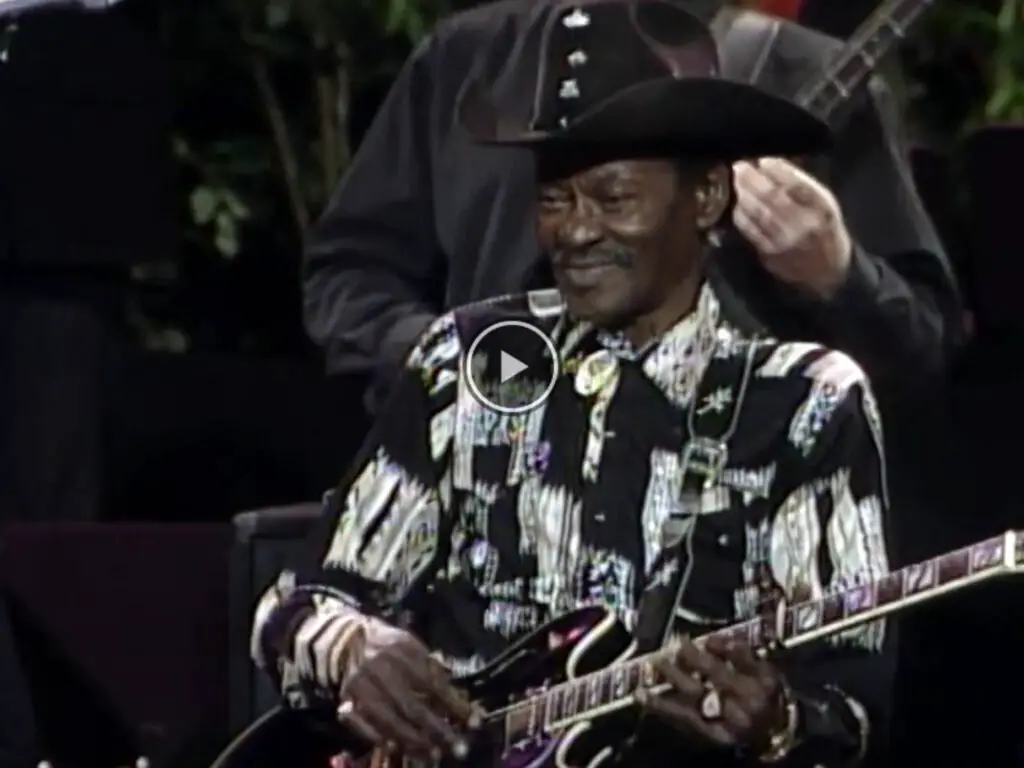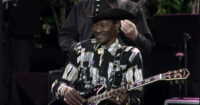Clarence “Gatemouth” Brown – Leftover Blues
Clarence “Gatemouth” Brown, born on April 18, 1924, in Vinton, Louisiana, was more than just a blues legend. He was a versatile and pioneering multi-instrumentalist, celebrated for his unique ability to blend diverse musical styles, and renowned for a personality as captivating as his performances. While often classified as a blues musician, Brown rejected genre limitations throughout his life, creating a sound that was a rich blend of blues, country, jazz, Cajun, swing, and even classical elements. This musical range, along with his larger-than-life presence, made him one of the most distinctive and influential figures in 20th-century American music.
Early Life and Influences
Brown was raised in Orange, Texas, and early on was immersed in a rich musical environment. His father, a railroad worker and musician, exposed him to a wide variety of genres, from fiddle tunes and country to big band and jazz. Brown’s musical education began early, with him mastering the fiddle and the guitar, and his eclectic taste in music was apparent even in his youth. By the time he was a teenager, Brown had already developed a sound that defied traditional categorizations.
One of his earliest breaks came in the mid-1940s when he filled in for blues legend T-Bone Walker at a show in Houston. Walker fell ill, and Brown was called to the stage to substitute. Brown stunned the audience with a fiery guitar solo, blending a mix of Texas blues with jazzy improvisation. His nickname “Gatemouth” came from this night, as his powerful voice projected through the venue with a depth and authority that left a lasting impression.
Clarence “Gatemouth” Brown: A Versatile Musician
While many of his peers in the blues community stayed rooted in traditional forms, Brown actively sought to expand his repertoire and explore different musical landscapes. His talent as a guitarist was undeniable, but he was equally proficient on other instruments, including the violin (or fiddle, as he preferred to call it), drums, harmonica, and even the mandolin.
Brown’s work in the 1950s and ’60s set him apart from many blues musicians of the time. He recorded a string of instrumental hits, most notably the tracks “Okie Dokie Stomp” and “Boogie Rambler.” These tunes showcased his extraordinary ability to fuse swing, boogie-woogie, and blues into one seamless and exciting sound. This period also saw him performing with his band, Gatemouth Brown and His Orchestra, which helped further solidify his reputation as a genre-crossing musician.
His adventurous approach to music continued throughout his career. Brown recorded albums that incorporated country, Cajun, and bluegrass influences, often surprising listeners who expected traditional blues. In his later years, albums like Pressure Cooker (1983) and Gate Swings (1997) demonstrated his unique ability to draw from a broad palette, from Western swing to jazz and rhythm and blues.
A Musician with a Larger-Than-Life Personality
Beyond his incredible musical talents, Clarence “Gatemouth” Brown was known for his vibrant personality. He was famously outspoken and insisted on being seen as more than just a blues artist, often remarking that he didn’t want to be pigeonholed into any one genre. Brown’s defiant independence shaped his long career, and he carried himself with a dignified sense of pride and wit, traits that endeared him to both fellow musicians and fans alike.
His on-stage presence was electrifying. Brown wasn’t merely playing music—he was sharing a piece of himself. Whether he was bending notes on his guitar, playing a soulful melody on the violin, or charming the crowd with his sharp humor, Gatemouth was the epitome of charisma. Offstage, he was just as engaging. Known for his warmth and sense of humor, Brown had a reputation for being approachable and down-to-earth, even as he became more prominent on the international music scene.
Brown was also a committed mentor. He took pride in helping younger musicians find their footing and was generous with advice and encouragement. His dedication to preserving traditional music forms, particularly Cajun and Creole music, was another testament to his deep love and respect for the many cultural influences that shaped his artistry.
A Legacy of Innovation
Clarence “Gatemouth” Brown left an indelible mark on the world of music. Over the course of his six-decade-long career, he earned numerous accolades, including a Grammy Award in 1983 for his album Alright Again!, which showcased his versatility and innovation. He was also inducted into the Blues Hall of Fame and earned a National Heritage Fellowship from the National Endowment for the Arts.
Even in his final years, Gatemouth Brown continued to tour and record, determined to share his music with the world. Unfortunately, his life came to an end on September 10, 2005, when he passed away from heart failure in Orange, Texas, after losing his home to Hurricane Katrina. His passing marked the end of an era, but his influence continues to resonate. Musicians from all backgrounds have cited him as an inspiration, not only for his technical brilliance but also for his refusal to be confined by genre boundaries.
Conclusion
Clarence “Gatemouth” Brown’s career was a testament to the power of individuality, versatility, and creativity. His ability to transcend musical genres while staying true to his roots made him one of the most remarkable and influential musicians of the 20th century. With his engaging personality and eclectic sound, Gatemouth Brown will forever be remembered as a trailblazer who enriched the world of music and touched the hearts of those who had the pleasure of hearing him perform.

Thank You Clarence “Gatemouth” Brown Fans
We appreciate your time and dedication to reading our article. For more of the finest blues guitar music, make sure to follow our Facebook page, “I Love Blues Guitar”. We share exceptional selections every day. Thank you once again for your continued support and readership.








